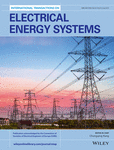Overcurrent protection relay-based Arduino Uno for FREEDM system
Summary
The smart grid technology has been enhanced by joining the newly proposed future renewable electric energy delivery and management (FREEDM) system and the normal distribution networks. FREEDM system integrates distributed renewable energy resources (DRER) and distributed energy storage devices (DESD) with the conventional network. One of the most important problems faced by the modern FREEDM technology is the possibility of communication failure or interruption of the system which may cause malfunction of the protection system operation. In this paper, an overcurrent relay is designed as backup protection by employing the Arduino Uno microcontroller to accurately protect the FREEDM network. A specific software program is designed to simulate the overcurrent relay satisfying the inverse, very inverse, and extremely inverse characteristics and a part of the FREEDM system connected to variable load using the Proteus software package. To satisfy the efficiency of the designed software simulator, the three characteristics are tested and compared with the trusted IEC 60255-151 standard. An electronic circuit board is designed and uploaded with a friendly developed software program particularly formulated to protect the solid-state transformer (SST) connected to DRER, DESD, and loads from one side and the FREEDM system ring at the other side. The practical board is connected to a small load (motor). To validate the proposed practical system, the normally inverse characteristic is tested and compared with both the software simulator and the similar characteristic represented in the IEC 60255-151standard. The proposed protection arrangement shows high precise results and performance.




